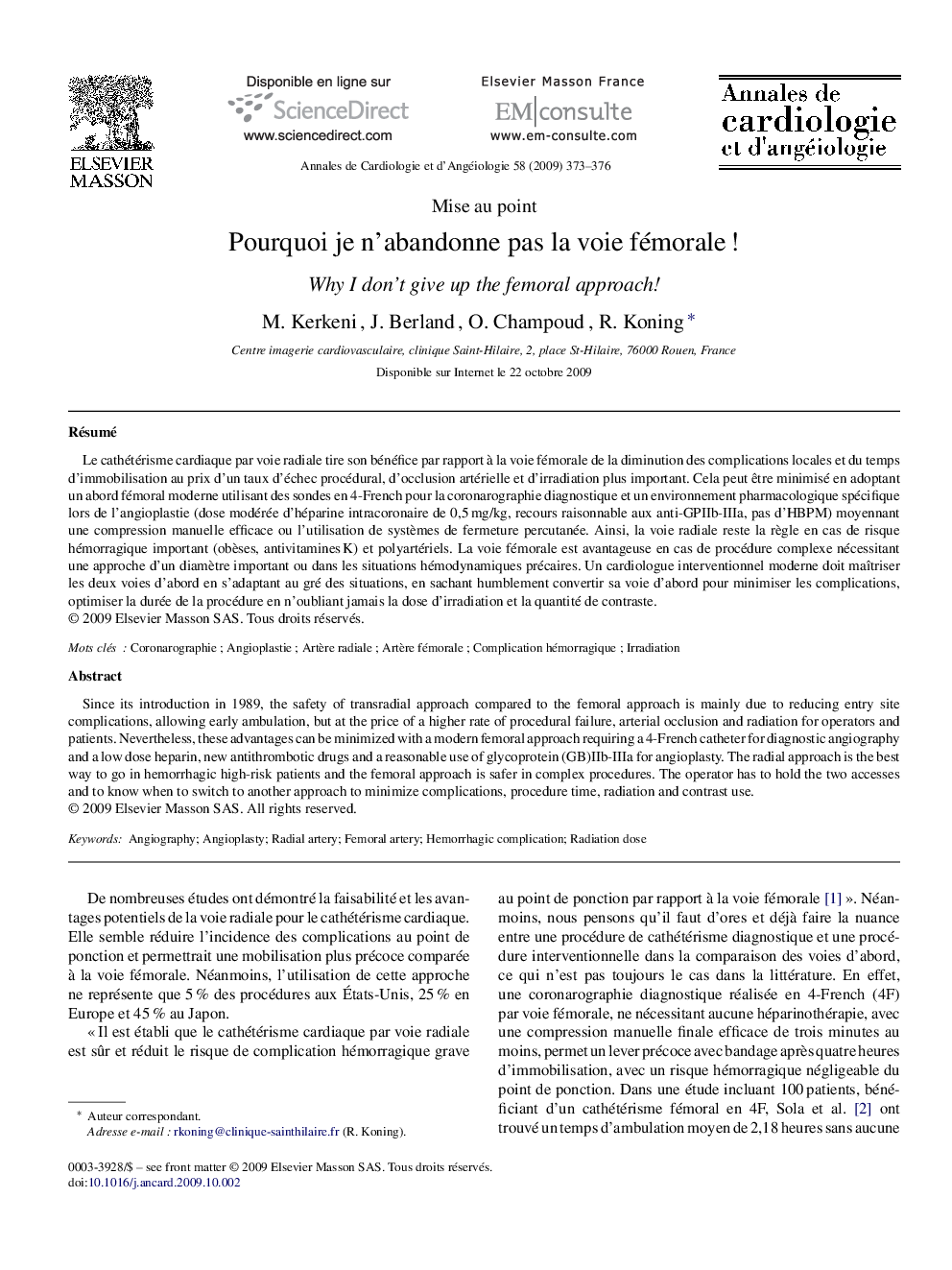| Article ID | Journal | Published Year | Pages | File Type |
|---|---|---|---|---|
| 2869433 | Annales de Cardiologie et d'Angéiologie | 2009 | 4 Pages |
Abstract
Since its introduction in 1989, the safety of transradial approach compared to the femoral approach is mainly due to reducing entry site complications, allowing early ambulation, but at the price of a higher rate of procedural failure, arterial occlusion and radiation for operators and patients. Nevertheless, these advantages can be minimized with a modern femoral approach requiring a 4-French catheter for diagnostic angiography and a low dose heparin, new antithrombotic drugs and a reasonable use of glycoprotein (GB)IIb-IIIa for angioplasty. The radial approach is the best way to go in hemorrhagic high-risk patients and the femoral approach is safer in complex procedures. The operator has to hold the two accesses and to know when to switch to another approach to minimize complications, procedure time, radiation and contrast use.
Keywords
Related Topics
Health Sciences
Medicine and Dentistry
Cardiology and Cardiovascular Medicine
Authors
M. Kerkeni, J. Berland, O. Champoud, R. Koning,
